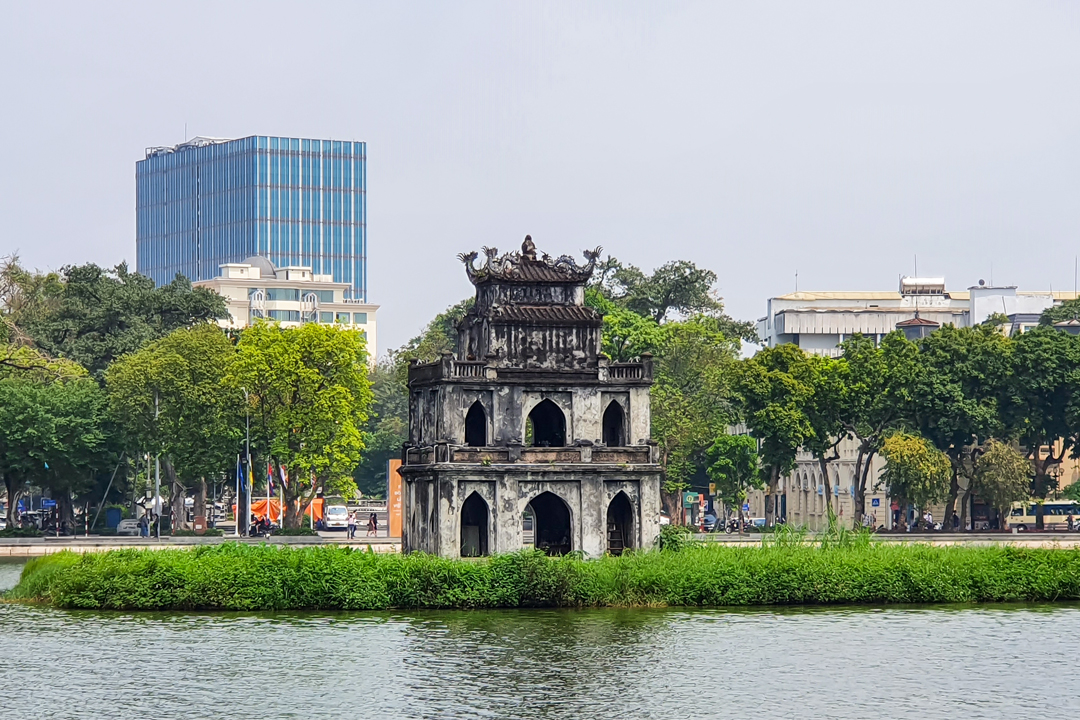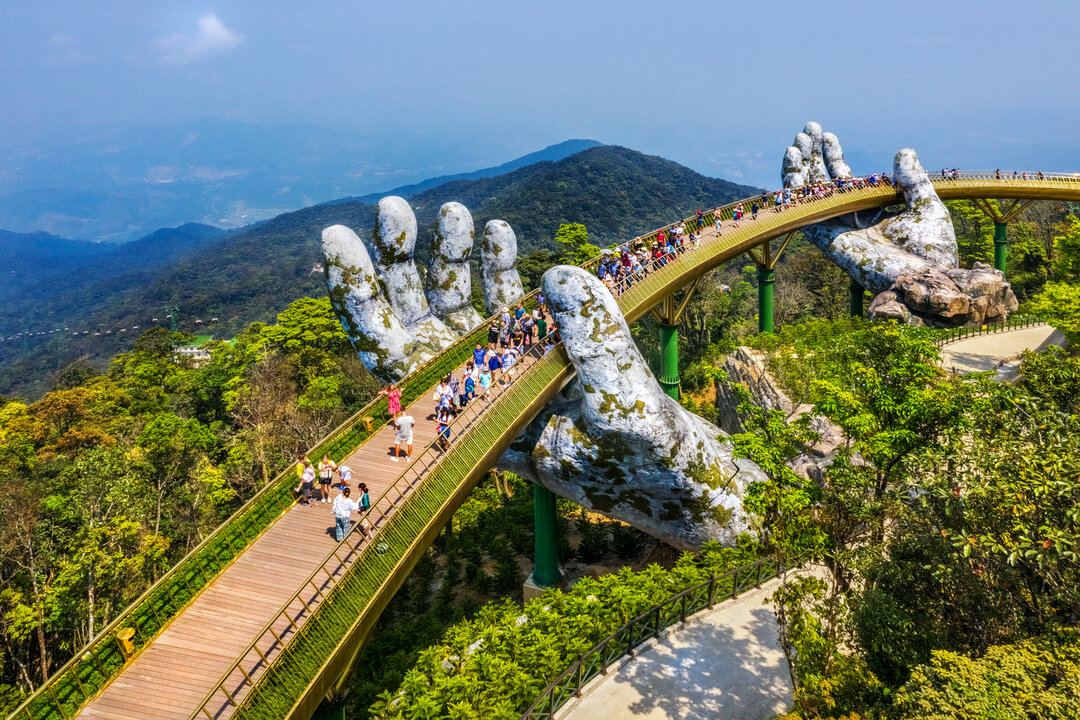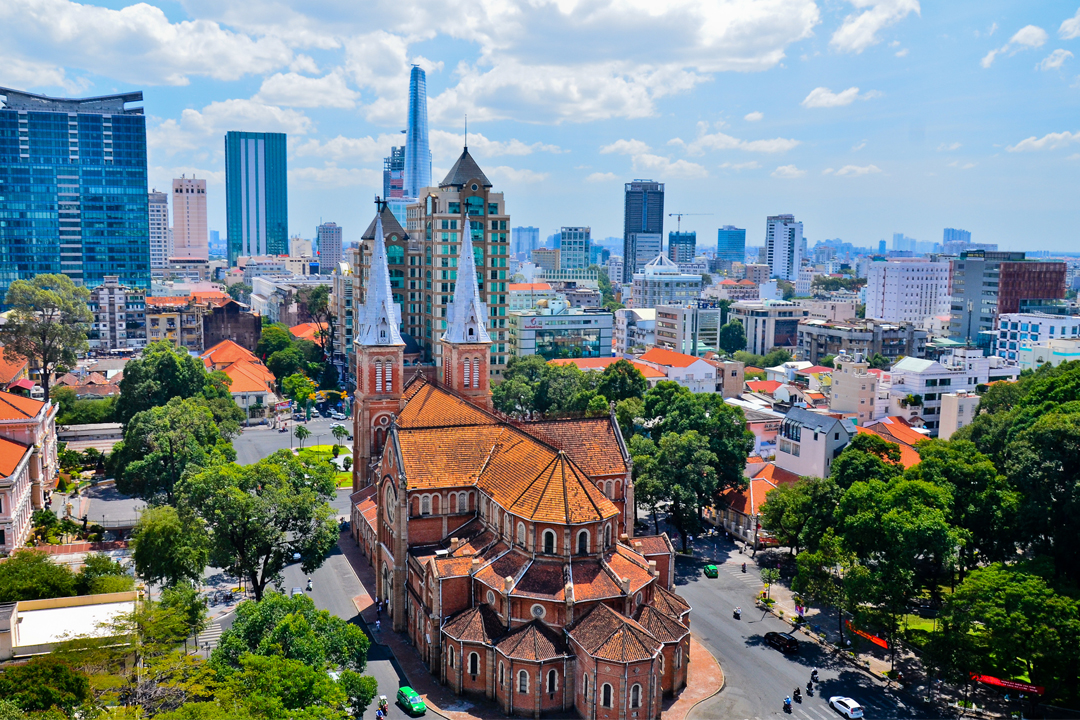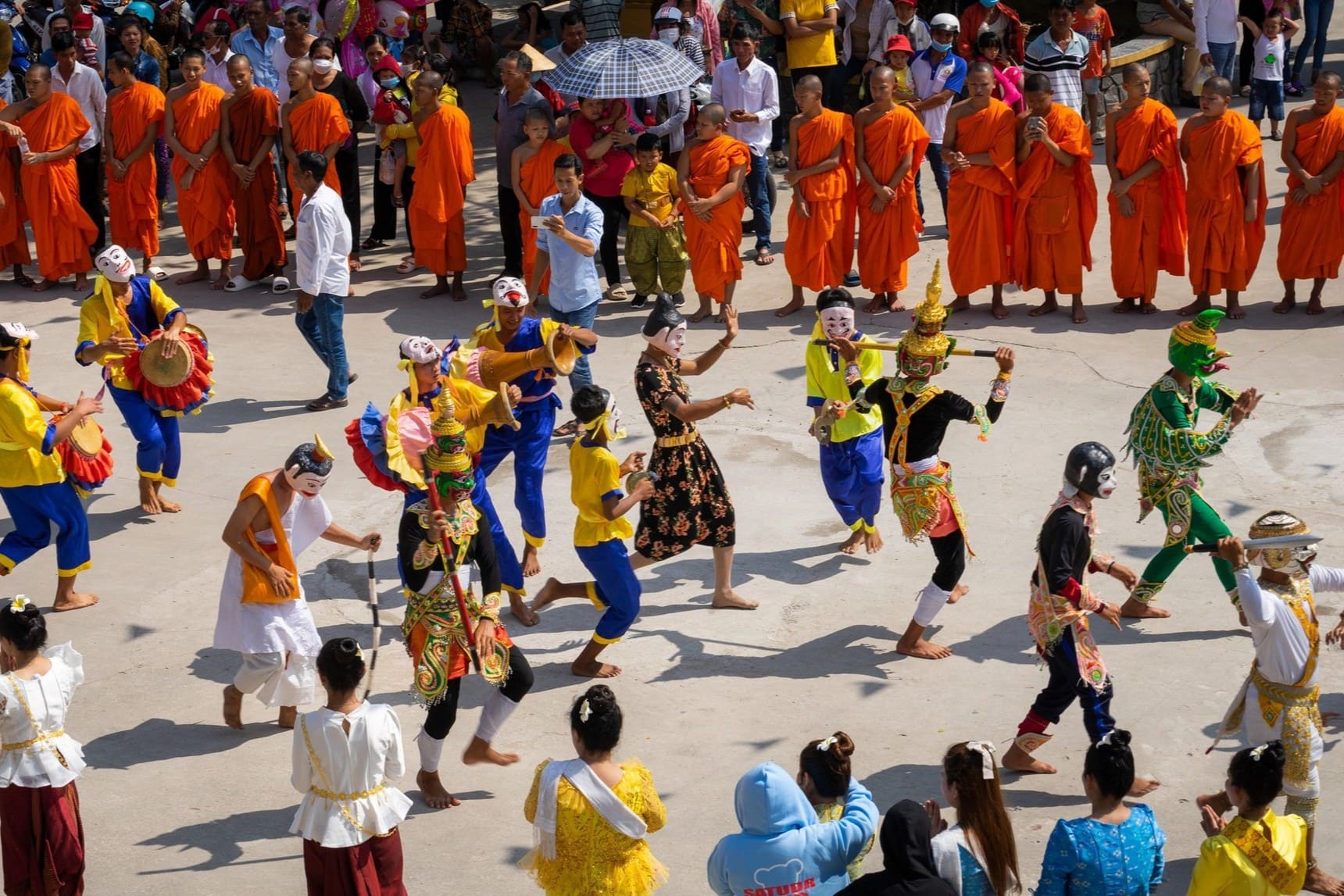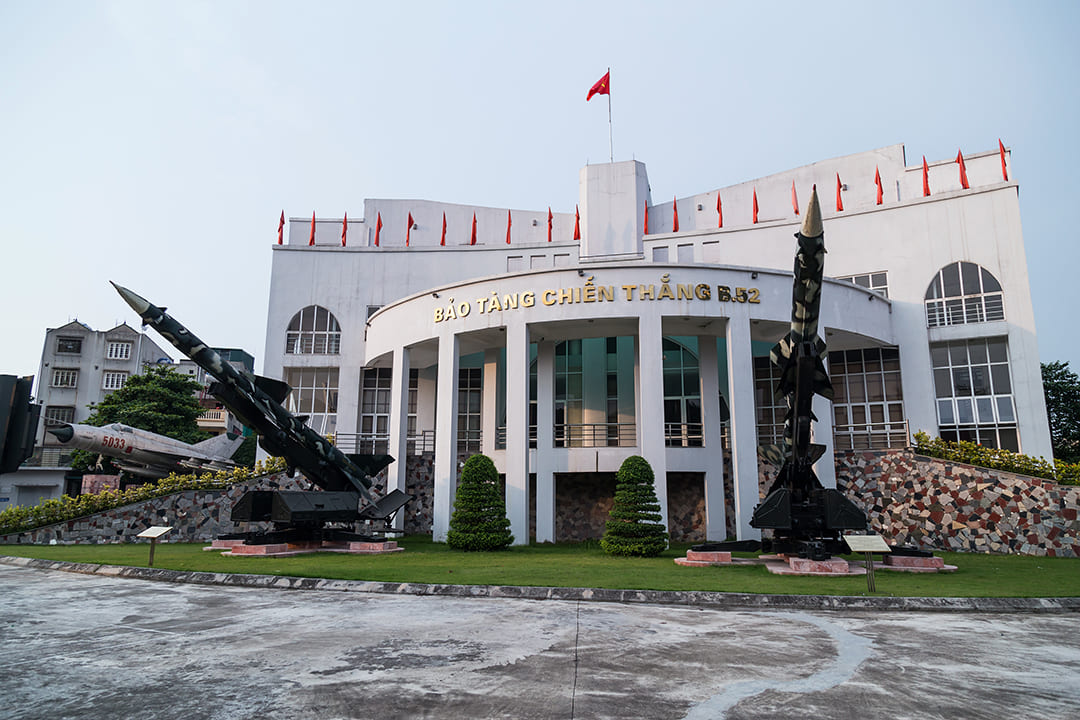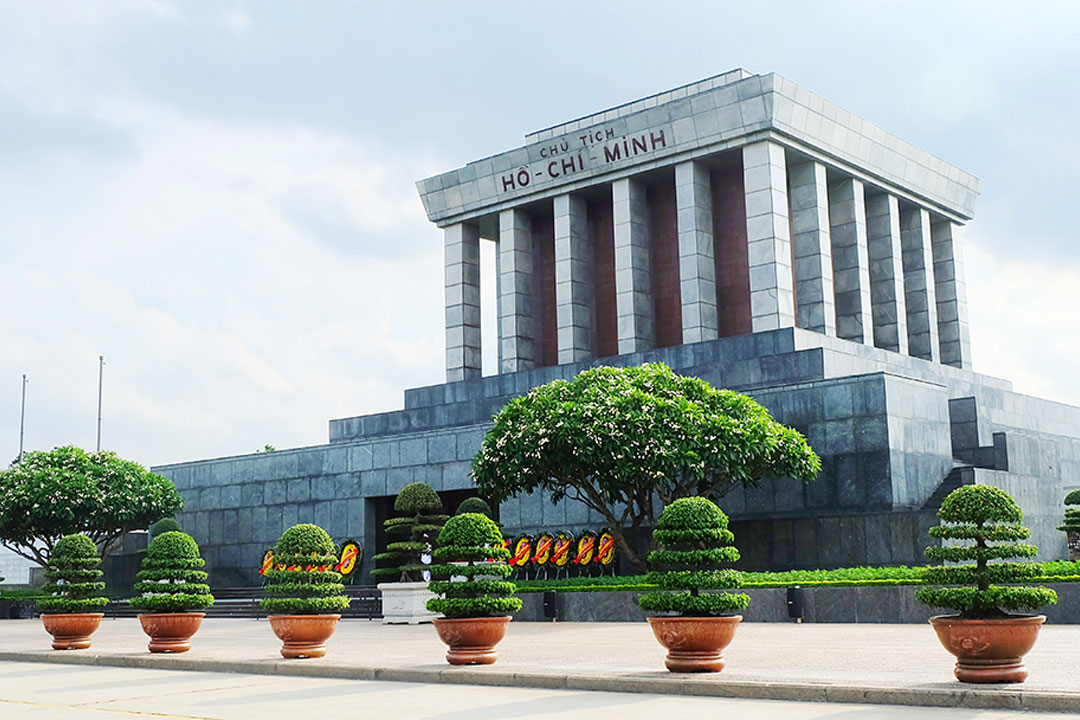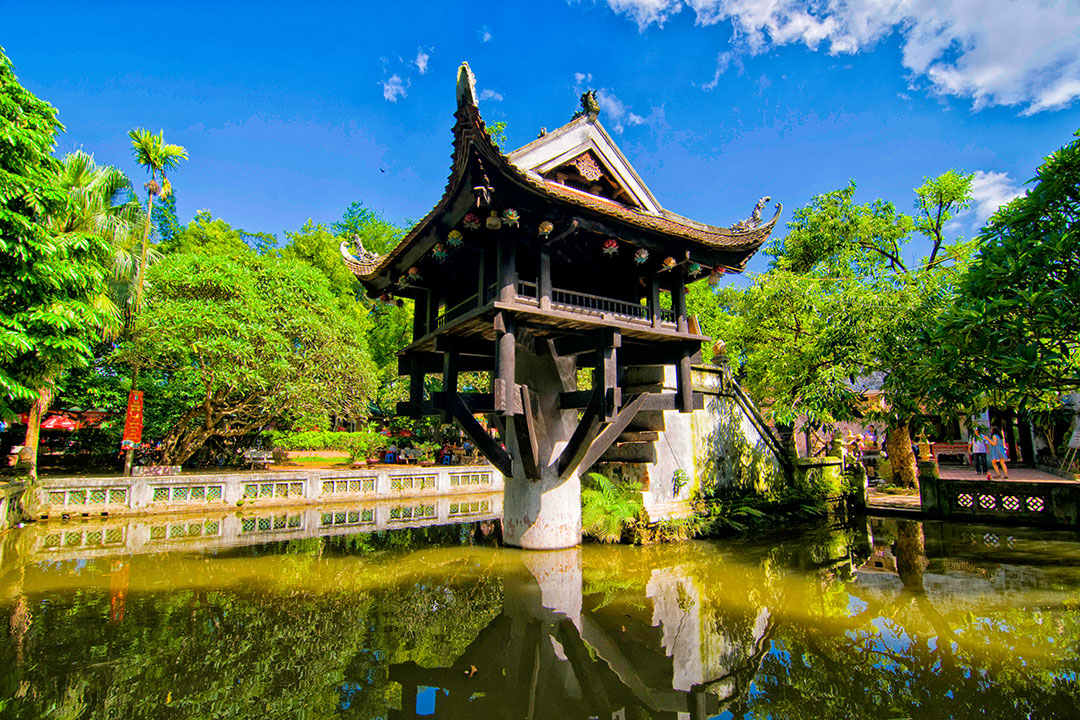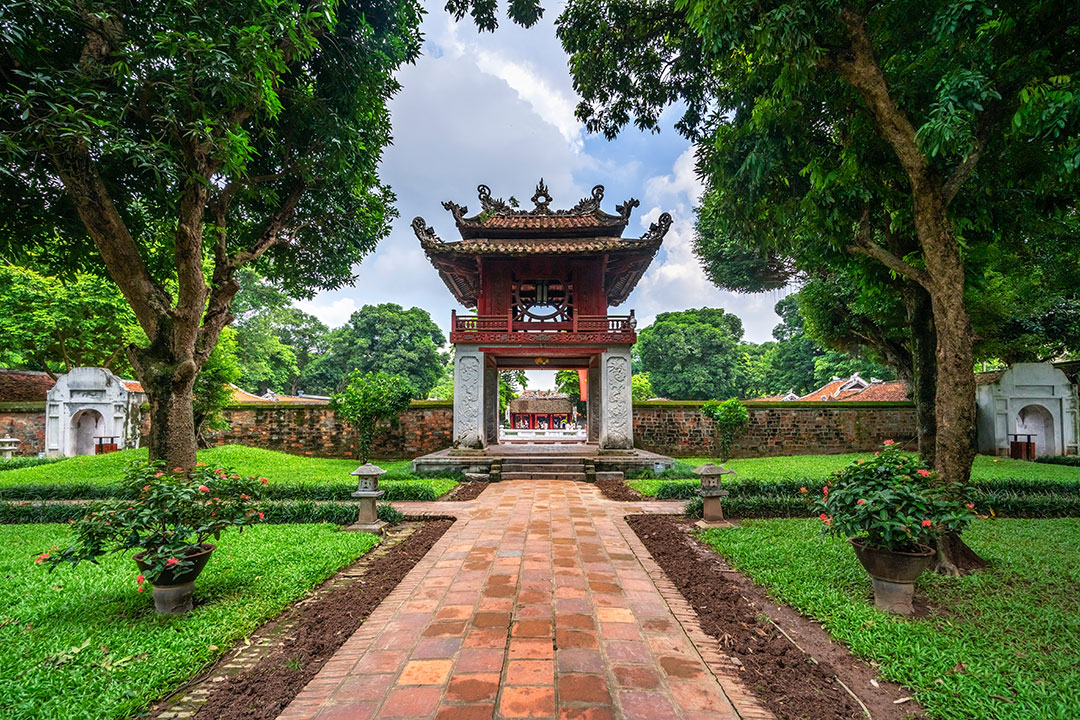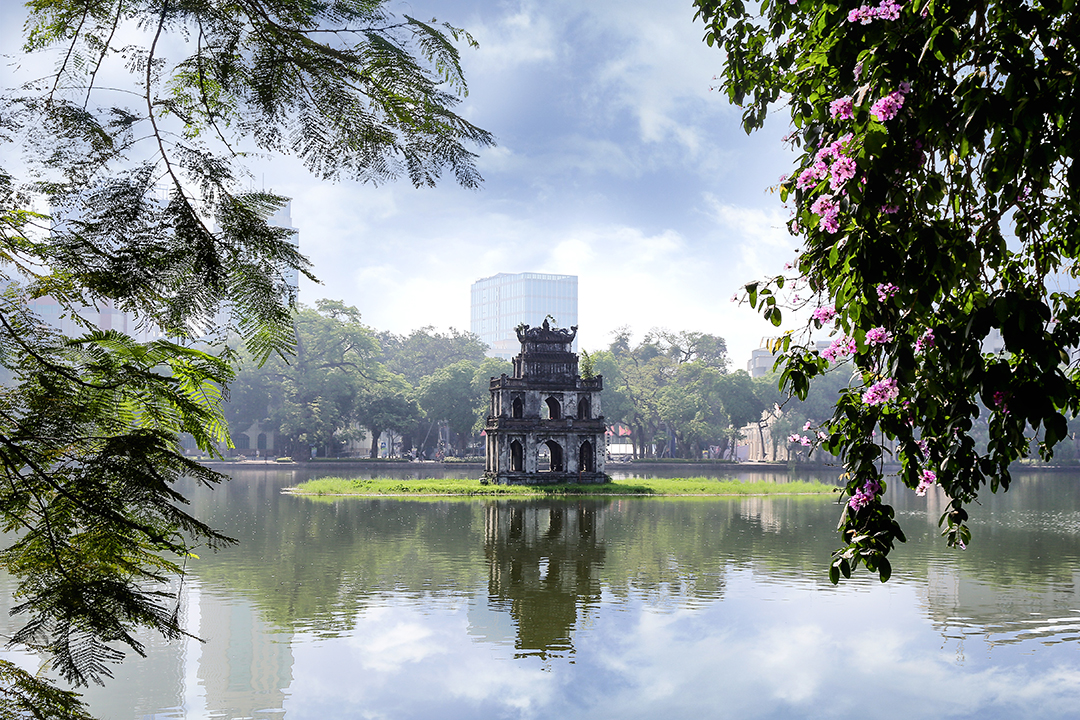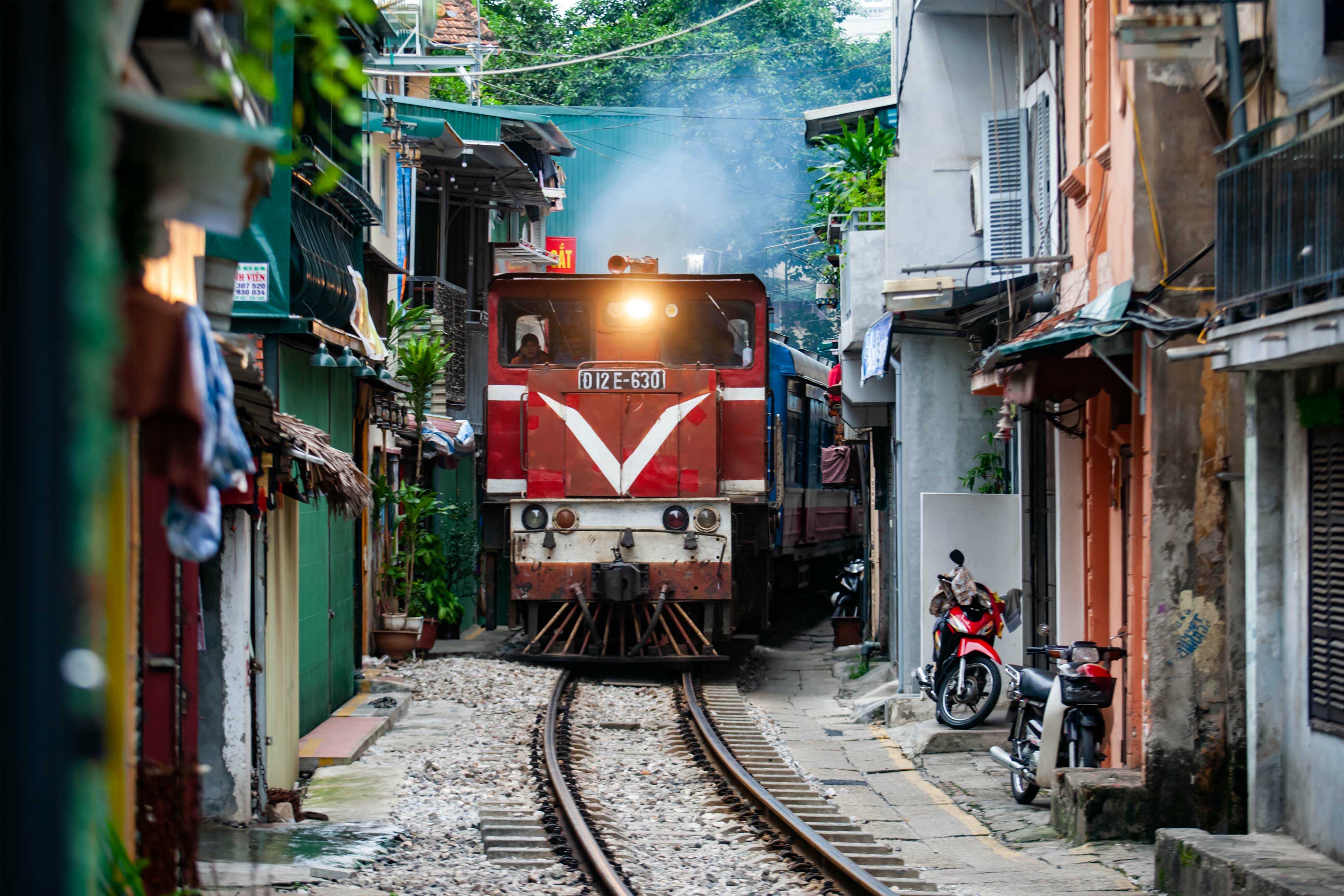B-52 Victory Museum in Hanoi: History, Things To Do, Exhibitions & Important Notes
Tucked away amid the lively streets of Hanoi, the B52 Victory Museum offers a powerful window into Vietnam’s wartime past. More than just a museum, it’s a place where history and resilience converge, telling the story of a nation that stood strong in the face of overwhelming odds. Ideal for those curious about military history or seeking a deeper understanding of Vietnam’s spirit, this museum presents an experience that is both moving and enlightening. Through authentic relics and dramatic remnants of downed B-52 bombers, you’re invited to explore pivotal moments that shaped not only Vietnam but global history. With GTrip’s detailed guide, you’ll see this site in a new light, not just as a display of wartime might, but as a symbol of courage, recovery, and hope.
Introduction to the B-52 Victory Museum
The B-52 Victory Museum stands as a powerful testament to Vietnam's resilience during the American War, specifically commemorating the historic air defense victory of December 1972. This specialized military museum offers tourists a comprehensive look at one of Vietnam's most significant military achievements while showcasing authentic wartime artifacts. They include remnants of downed American aircraft and advanced defensive weaponry.
Where is the B-52 Victory Museum?
Location: 157 Doi Can Street, Ba Dinh Ward, Hanoi (about 3 km west of Hoan Kiem Lake, near the Ho Chi Minh Mausoleum and the Presidential Palace)
The B-52 Victory Museum is conveniently situated within Hanoi’s historical and political district. This central spot places it among numerous important landmarks, making it an easy stop for travelers exploring the city.
You can easily identify the museum by its distinctive entrance featuring military-themed architecture and the prominent wreckage of American aircraft displayed outside. The museum sits on spacious grounds with multiple exhibition buildings surrounded by outdoor displays of military equipment and aircraft parts.
For those using digital maps or ride-sharing apps, searching "B-52 Victory Museum" or "Bao tang Chien thang B-52" will direct you accurately to this historical site. The museum's prominent location on Doi Can Street, a major thoroughfare in Hanoi, makes it accessible from most parts of the city.
Admission fees and opening hours
Admission details:
- Completely free for all visitors (both Vietnamese and international tourists)
- No separate fees for photography or special exhibitions
- Guided tours are available (though tips for guides are appreciated)
- Group visits are welcome without a reservation for small parties
Operating hours:
- Morning session: 8:00 AM to 11:00 AM
- Afternoon session: 1:30 PM to 4:30 PM
- Closed for lunch between 11:00 AM and 1:30 PM
- Closed completely on Mondays and Fridays for maintenance
- Last admission 30 minutes before closing
Tourists should plan their visit accordingly, especially noting the extended midday closure and complete closures on Mondays and Fridays. The museum occasionally extends hours during national holidays and anniversaries related to the air victory, though these special openings are announced on their website.

The B-52 Victory Museum stands as a powerful testament to Vietnam's resilience, specifically commemorating the historic air defense victory of December 1972
The history behind the B-52 Victory Museum
The B-52 Victory Museum was officially inaugurated on December 22, 1997, commemorating the 25th anniversary of Hanoi's defense during the December 1972 air battles. The museum stands as a monument to what the Vietnamese call the "Dien Bien Phu in the air" victory, referencing their earlier decisive triumph at Dien Bien Phu.
Significant renovations and expansions were completed in December 2012, marking the 40th anniversary of the air defense victory with enhanced exhibits and improved facilities. These upgrades introduced modern display techniques, interactive exhibits, and additional artifacts to provide you with a more engaging historical experience.
The museum's central historical focus remains the famous "12 days and nights" air battle from December 18 - 30, 1972, during Operation Linebacker II. During this intense period, Vietnamese forces claimed to have shot down 81 American aircraft, including 34 B-52 strategic bombers, forcing the United States to return to peace negotiations in Paris.
Beyond the December 1972 campaign, exhibits chronologically document the Vietnamese revolution, the First Indochina War against French colonialism, and the broader Vietnam War. Displays detail major American air operations including Rolling Thunder (1965-1968), Linebacker I (May-October 1972), and the climactic Linebacker II (December 1972) bombing campaigns.
Architectural features of the B-52 Victory Museum
The B-52 Victory Museum showcases Vietnam's architectural prowess in commemorating historical events through thoughtful design. Its structure balances functionality with symbolic elements that honor the nation's military achievements. The complex integrates indoor exhibition spaces with outdoor displays to create a comprehensive visitor experience.
The museum complex features both climate-controlled indoor galleries and expansive outdoor exhibition areas. Indoor spaces protect delicate artifacts and documents from Hanoi's variable weather conditions. The outdoor sections allow tourists to experience larger military artifacts within a contemplative landscape setting.
Vietnamese architectural influences are evident throughout the museum's design elements. Traditional motifs blend with modern construction techniques to create a distinctly Vietnamese memorial space. The building's exterior incorporates angular elements that suggest both strength and forward movement.
The main building spans approximately 1,500 square meters of indoor exhibition space divided between two floors. The ground floor chronicles the development of Hanoi's armed forces through carefully curated displays. The second floor is dedicated entirely to the December 1972 "12 days and nights" air battle with extensive documentation.
Museum layout details:
- First floor showcases local military history with chronological displays and interactive elements
- The second floor focuses exclusively on Operation Linebacker II and its significance
- Exhibition halls feature specialized lighting to highlight important artifacts
- Climate-controlled display cases protect fragile documents and photographs
- Wide corridors accommodate tourist flow during peak tourism seasons
The outdoor exhibition area encompasses roughly 4,000 square meters, with the centerpiece being actual B-52 wreckage. This preserved aircraft debris measures 59 meters in length with a wingspan of over 56 meters. The placement of these aircraft remains creates a powerful visual testament to Vietnam's air defense capabilities. The museum's architectural design emphasizes open sightlines that guide you through the historical narrative. Strategic placement of windows allows natural light to illuminate certain exhibits while maintaining conservation standards. The building's layout encourages a chronological journey through Vietnam's air defense history.
Memorial spaces throughout the complex provide opportunities for reflection and contemplation. These quieter areas feature inscriptions honoring those who defended Hanoi during American bombing campaigns. Simple benches positioned thoughtfully allow you to rest while processing the museum's powerful historical content.
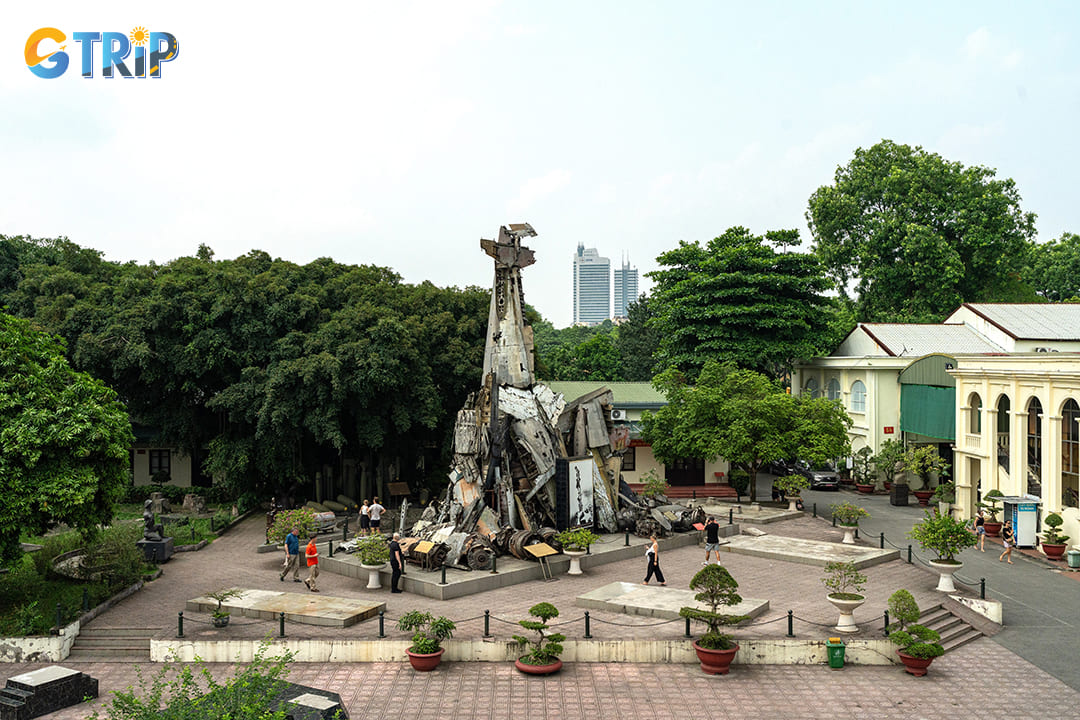
The museum complex features both climate-controlled indoor galleries and expansive outdoor exhibition areas
Things to do at the B-52 Victory Museum
The B-52 Victory Museum offers you an immersive journey into Vietnam's military history with diverse exhibitions and educational opportunities. The museum presents numerous ways to engage with Vietnam's wartime past. Here's what you can experience during your visit to this significant historical landmark.
View outdoor exhibitions
The expansive 4,000-square-meter outdoor area serves as the museum's most striking feature. You can examine the actual wreckage of a B-52 Stratofortress shot down during the 1972 Christmas bombing campaign. The twisted metal fragments rest dramatically on a platform, silently telling the story of Hanoi's air defense victory.
Surrounding the central B-52 display are impressive examples of Vietnam's air defense capabilities. Several well-preserved MiG-21 fighter jets stand proudly, representing the Vietnamese aircraft that challenged American air superiority. Anti-aircraft artillery pieces, including ZPU-1, ZPU-2, and ZPU-4 guns, are positioned strategically throughout the grounds.
You can also examine larger 37mm and 57mm anti-aircraft guns that formed Vietnam's defensive network. The imposing KS-19 100mm air defense guns demonstrate the escalating sophistication of Vietnam's military technology. Complete Fan Song radar systems and SA-2 surface-to-air missiles provide context to Vietnam's coordinated defense strategy during the war.

The expansive 4,000-square-meter outdoor area serves as the museum's most striking feature
Explore indoor exhibitions
The museum's interior houses two major thematic exhibitions that provide historical depth to the outdoor displays. "Determined to Brave Death for the Survival of the Fatherland" presents Vietnam's patriotic resistance through compelling visuals and artifacts. The second exhibition details the famous "Dien Bien Phu in the air" battle, chronicling the intense 12-day campaign that became pivotal in Vietnam's history.
Historical photographs transport you back to December 1972, complemented by detailed campaign maps showing flight paths and defense positions. Military documents, including original orders and communications, reveal the strategic thinking behind Vietnam's air defense system. Personal artifacts from Vietnamese soldiers create emotional connections to the individuals who participated in the conflict.
The museum houses impressive technological displays, including fragments of the Boeing B-52D Stratofortress. A complete Mikoyan Gurevich MiG-21bis jet fighter represents the Vietnamese Air Force's primary aircraft during the period. Various anti-aircraft weapons and missile fragments demonstrate the technological aspects of Vietnam's defense operations against American bombing campaigns.
Personal effects and testimonials from military personnel provide intimate glimpses into wartime experiences. Civilian testimonials reveal how ordinary Hanoians endured and supported defense efforts during the aerial bombardment of their city.
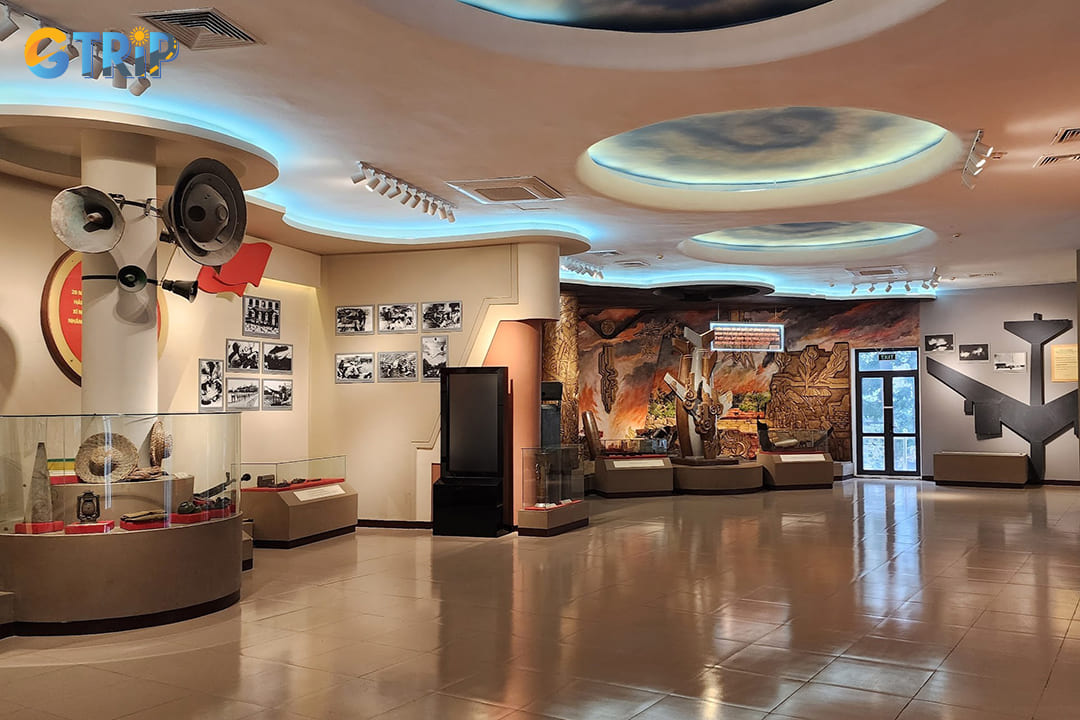
Various anti-aircraft weapons and missile fragments demonstrate the technological aspects of Vietnam's defense operations against American bombing campaigns
Attend educational talks or commemorative events
You can participate in guided interpretations of Vietnam's wartime propaganda posters that mobilized the population. Museum experts explain the historical context and symbolism behind various campaign documents that coordinated Vietnam's war effort. Special presentations reveal Vietnamese air defense tactics that successfully countered the technological advantages of American forces.
The museum regularly hosts temporary exhibitions focusing on specific aspects of the air campaign. Veteran testimonial events provide firsthand accounts from those who participated in the air defense of Hanoi. These special programs often coincide with significant historical anniversaries related to the war.
December 22 marks the anniversary of the 1972 victory and features major commemorative ceremonies. These events typically include military honors, special exhibitions, and cultural performances celebrating Vietnamese resilience. Historical reenactments and documentary screenings sometimes accompany these special anniversary observances.
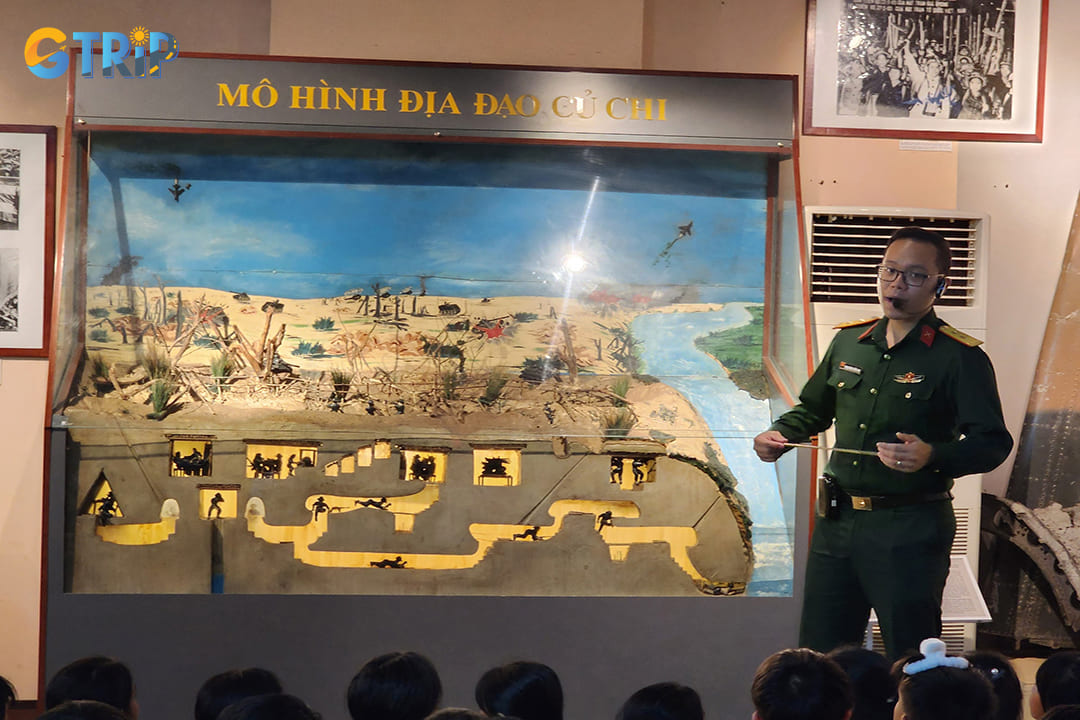
You can participate in guided interpretations of Vietnam's wartime propaganda posters that mobilized the population
Take memorable photos at the B-52 Victory Museum
The dramatic B-52 wreckage creates an iconic backdrop for photographers interested in military history. Morning light casts compelling shadows across the aircraft remains, creating dramatic contrast for striking photographic compositions. The juxtaposition of destructive warfare machinery against peaceful surroundings makes for thought-provoking images.
Vietnamese military equipment displays offer unique photography opportunities that capture technological aspects of the conflict. The museum's outdoor setting, with its open spaces, allows for wide-angle shots encompassing multiple exhibits together. Indoor exhibition lighting creates ideal conditions for detailed photography of smaller artifacts and historical documents.
Tourists often photograph the museum's informative placards to reference historical details later. The museum's location in contemporary Hanoi creates interesting visual contrasts between Vietnam's wartime past and its developing present. Photography enthusiasts should note that tripods may require special permission, particularly during busy periods.

The museum's outdoor setting, with its open spaces, allows for wide-angle shots encompassing multiple exhibits together
How to get to the B-52 Victory Museum?
The B-52 Victory Museum is accessible through various transportation options. You can reach this historical landmark via public transportation, private vehicles, or rental options. Each method offers different advantages depending on your budget, time constraints, and comfort preferences.
By bus
Hanoi's extensive public bus network provides several convenient routes to reach the B-52 Victory Museum. Bus 09 connects the Old Quarter to the museum, offering tourists a budget-friendly option for sightseeing. Bus 14 runs from the Hoan Kiem Lake area, making it perfect for visitors staying in central Hanoi.
Bus 45 and Bus 50 service the museum from the western districts, stopping within a short walking distance of the entrance. Bus 143 and Bus 49 are excellent options for travelers coming from the southern Hanoi areas. Bus 99, primarily used by locals, follows a route passing near several historical sites, including the museum.
The CNG03 and CNG05 buses are newer, environmentally friendly compressed natural gas vehicles with air conditioning. Bus fares in Hanoi typically range from 7,000 to 9,000 VND (approximately $0.30 to $0.40) depending on the distance traveled. Buses run frequently between 5 AM and 9 PM, making them a reliable transportation choice for daytime museum visits.
By taxi or ride-hailing apps
For tourists preferring door-to-door service, taxis and ride-hailing services provide convenient transportation to the B-52 Victory Museum. Hanoi has numerous taxi companies with distinctive colored vehicles, including Mai Linh, Vinasun, and G7. Ride-hailing apps like Grab and Be are increasingly popular choices for both tourists and locals in Hanoi.
These digital platforms offer convenient booking with upfront pricing and driver tracking features. Fares typically range from 50,000 VND to 100,000 VND ($2.15 - $4.30) depending on your starting location within Hanoi. Most drivers understand basic English or can follow map directions to "B-52 Victory Museum" or "Bao tang Chien thang B-52".
Hotel concierges can assist with calling reliable taxis if you're uncomfortable using apps. Travel time varies between 15-30 minutes from most central Hanoi locations, though anticipate longer journeys during rush hours (7:30-9:00 AM and 5:00-7:00 PM).
By motorbike or bicycle rental
Renting motorbikes or bicycles offers flexibility and independence when visiting the B-52 Victory Museum and other Hanoi attractions. Motorbike rentals are widely available throughout Hanoi, particularly in the Old Quarter and around West Lake tourist areas. Standard motorbikes like Honda Air Blades or Yamaha Nouvos cost approximately 150,000 - 250,000 VND ($6.50 - $10.75) per day.
Larger or newer models may command higher rates, reaching 400,000 VND ($17.20) or more daily. Most rental shops require passport deposits or copies, so prepare accordingly before visiting. Bicycle rentals present an eco-friendly alternative, typically costing 40,000 - 80,000 VND ($1.70 - $3.45) per day, depending on bicycle quality.
The museum is approximately 4 kilometers from Hoan Kiem Lake, making it accessible within 15-20 minutes by motorbike. Navigation apps like Google Maps provide reliable directions to the "B-52 Victory Museum". Consider Hanoi's traffic patterns when planning your journey – roads become significantly congested during rush hours.

The B-52 Victory Museum is accessible through various transportation options
Important notes for visitors when visiting the B-52 Victory Museum
The B52 Victory Museum stands as a significant historical landmark in Hanoi, documenting Vietnam's resistance against American bombing campaigns. To ensure a respectful and educational experience for all tourists while preserving the museum's historical artifacts, several important guidelines must be observed. These rules help maintain the museum's solemn atmosphere and protect its valuable exhibits for future generations.
Museum etiquette and regulations
Dress code and behavior guidelines:
- Dress modestly and appropriately: You should wear respectful attire that covers shoulders and knees, similar to other historical sites in Vietnam
- Maintain a quiet, respectful demeanor throughout your visit to honor the historical significance
- Follow staff instructions immediately and courteously when directed
- Speak in hushed tones to maintain the contemplative atmosphere for all tourists
Prohibited activities:
- No smoking anywhere within the museum premises
- No food or beverages are allowed in the exhibition areas
- No touching displays or leaning on glass cases to prevent damage to historical artifacts
- No flash photography in certain sensitive exhibition areas (check signage)
Practical information for visitors
Security procedures:
- Deposit large bags and luggage at the designated reception area before entering
- Security checks may be conducted at the entrance
- Weapons, explosives, and flammable items are strictly prohibited for safety reasons
Photography and documentation:
- Seek permission before extensive photography or filming
- Tripods and professional equipment may require special authorization
- Some exhibits may have photography restrictions - always check signage or ask staff
- Respect the privacy of other people when taking photos
Visitor responsibility:
- Visitors will be held liable for any damage caused to museum property
- Parents must supervise children closely throughout the visit
- Report any concerns or emergencies to the museum staff immediately
Following these guidelines ensures a meaningful visit while preserving this important historical site that commemorates Vietnam's resilience during a pivotal period in its history.
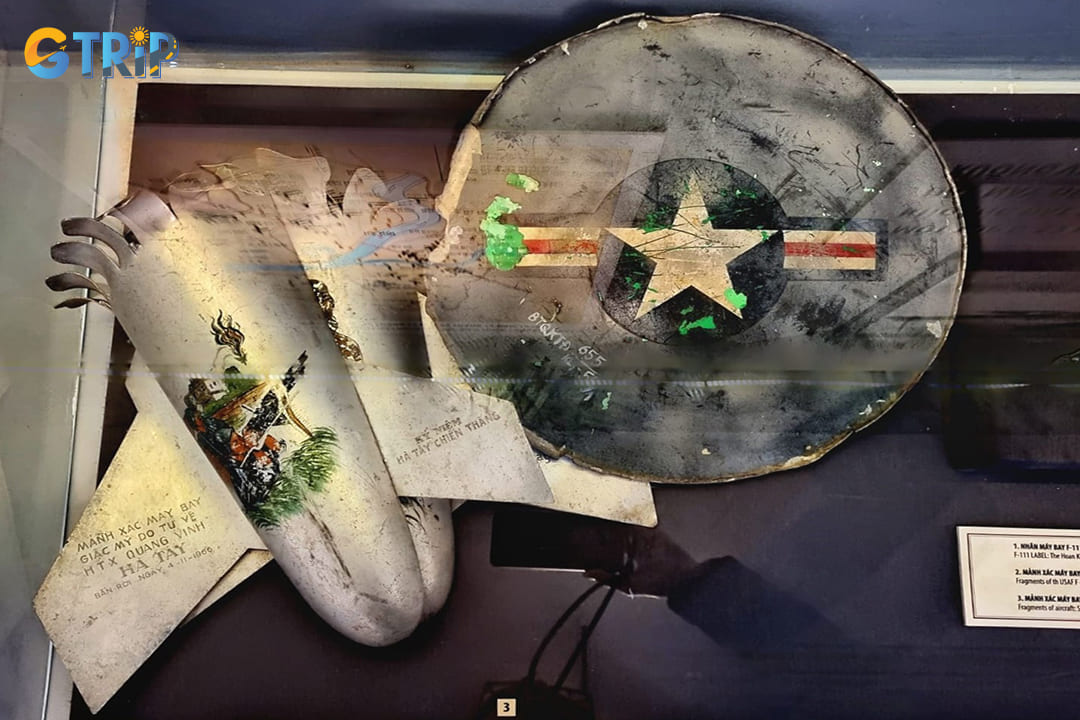
The B52 Victory Museum stands as a significant historical landmark in Hanoi, documenting Vietnam's resistance against American bombing campaigns
Nearby attractions from the B-52 Victory Museum
Complement your visit to the B-52 Victory Museum with these fascinating nearby attractions, all within walking distance. These sites provide additional context to Vietnam's rich history and cultural heritage, creating a comprehensive experience for visitors interested in deepening their understanding of Hanoi's historical significance.
Huu Tiep Lake (300m)
Just a short five-minute walk from the B-52 Victory Museum lies Huu Tiep Lake, a hidden historical gem in Hanoi's Ngoc Ha neighborhood. This small, serene lake contains the wreckage of an American B-52 bomber shot down during the 1972 Christmas bombing campaign. The twisted metal remains still protrude from the water, creating a stark visual reminder of Vietnam's turbulent past.
Local residents have preserved this crash site as an informal memorial to their victory over American airpower. You can observe how everyday life continues around this powerful war relic, with locals fishing and exercising nearby. The lake offers a uniquely authentic perspective on how Vietnamese people have integrated war remnants into their daily environment.
What to see at Huu Tiep Lake:
- B-52 aircraft wreckage preserved in its original crash position
- Memorial plaque detailing the December 27, 1972, air defense victory
- The traditional Vietnamese neighborhood surrounding the lake
- Local community life continues around this historical site

Huu Tiep Lake contains the wreckage of an American B-52 bomber shot down during the 1972 Christmas bombing campaign
One Pillar Pagoda (900m)
The iconic One Pillar Pagoda stands approximately 900 meters from the B-52 Victory Museum, easily reached within a 10 - 15 minute walk. This unique Buddhist temple resembles a lotus blossom rising from the water, supported by a single stone pillar. Emperor Ly Thai Tong commissioned this architectural marvel in 1049 after dreaming of meeting the Goddess of Mercy.
Though destroyed by French forces in 1954, the pagoda was faithfully reconstructed to maintain its historical significance. You can admire the distinctive wooden structure perched atop its stone pillar while exploring the surrounding gardens. The site remains an active place of worship where locals come to pray for fertility and good health.
| One Pillar Pagoda highlights | Details |
|---|---|
| Architecture style | Traditional Vietnamese Buddhist design resembles a lotus flower |
| Historical significance | Built in 1049, reconstructed after the 1954 destruction |
| Cultural importance | Recognized as one of Vietnam's most iconic Buddhist temples |
| Visiting time | 15-30 minutes to fully appreciate the site |
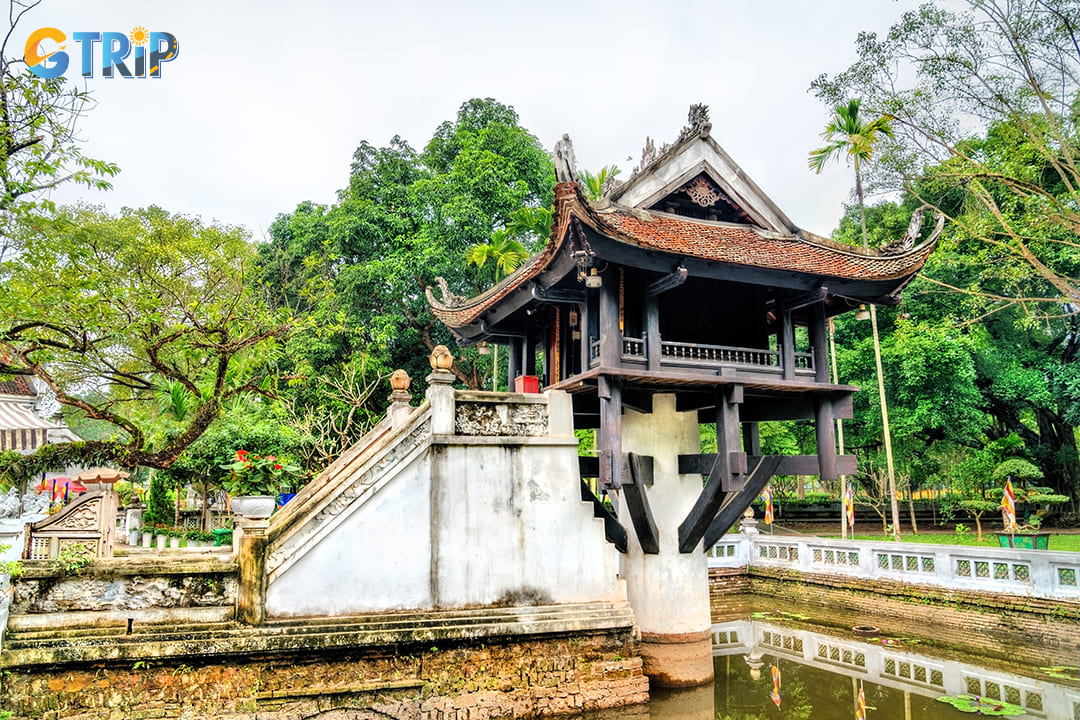
The iconic One Pillar Pagoda stands approximately 900 meters from the B-52 Victory Museum
Ho Chi Minh Museum (1.1km)
Located 1.1 kilometers from the B-52 Victory Museum, the Ho Chi Minh Museum presents a comprehensive look at Vietnam's revolutionary leader. The striking modernist building houses exhibits chronicling Ho Chi Minh's life and Vietnam's struggle for independence. You can explore artifacts, photographs, and artistic installations across four floors of thoughtfully curated exhibits.
The museum combines traditional historical displays with abstract artistic interpretations of revolutionary themes. Interactive elements engage tourists while providing insights into Vietnam's complex political journey toward independence. The museum stands adjacent to Ho Chi Minh's Mausoleum and the Presidential Palace historical area, forming part of a significant memorial complex.
Practical information for visitors:
- Opening hours: 8:00 AM to 11:30 AM and 1:30 PM to 4:00 PM (closed Mondays and Fridays)
- Entrance fee: 40,000 VND (approximately $1.75) for international visitors
- Photography is permitted without flash in most areas
- Guided tours available in multiple languages
- Respectful attire required (shoulders and knees covered)

The Ho Chi Minh Museum presents a comprehensive look at Vietnam's revolutionary leader
A visit to the B-52 Victory Museum does more than recount wartime events. It offers a quiet yet powerful reflection on resilience, strategy, and national spirit. Walking through its exhibits, you gain insight into a defining chapter of Vietnam’s modern history, one that continues to shape the country’s identity today. With this deeper understanding, you leave not just informed, but moved. The experience encourages you to look beyond the museum walls, to seek out more of Vietnam’s layered history and the stories that still live on in its streets, monuments, and people. As you continue your journey, consider booking Hanoi tours with GTrip - Vietnam Travel Agency to explore more deeply the museum and other attractions in Hanoi.

